It’s a long way from Colombia to British Columbia, and that’s how far the little tubs of cape gooseberries I bought recently have travelled to the local supermarket shelves.
Native to South America, Physalis peruviana has travelled much further afield, over the centuries, acquiring new names and admirers along the way. A stopover on the Cape of Good Hope, in South Africa, is apparently responsible for their commonly being referred to as “cape” gooseberries. Whatever route they took to make their way into Coorg, where they were christened goomatté pann in the Kodava language, these luscious berries have played a starring role in many a childhood adventure.
Just ask someone who grew up in Coorg. Chances are, their face will light up at the mention of goomatté, and you will be treated to rapturous accounts of how eagerly they sought out these golden treasures as children. In time-honoured fashion, the best finds were to be made when loitering on the way to or from school. Berry hunters had to be alert to competitors – from fellow “bench mates” at school, to beady eyed birds. They would map the location and fruit-worthiness of the rambling shrubs, and keep an eye out for signs that someone else might be checking on them too.
Watching and waiting for the soft green casings to turn yellow and papery as the fruit inside ripened was an exercise in patience. Few could resist the urge to sneak a quick peek, tearing apart the still green “cape” to check on the progress of the berry. If it was disappointing to find they were not ripening fast enough, it was far worse to arrive too late, to a scattering of empty pods or bird-pecked berries. After waiting patiently for weeks, finding a perfectly ripe berry, then biting through the skin and savouring a burst of sweet-sour pineappley flavour – that’s the stuff memories are made of!
So, my question is, if goomatté pann is so beloved, (as it seems to be, based on my informal survey), why is it not properly cultivated in Coorg?
It grows easily enough, it seems, but usually in all the wrong places. The hapless plants often end up being cut down and cleared during weeding work on the estates. I’m certain that seeds of superior varieties are available through nurseries. Jars of goomatté pann jam should be right up there with bottles of passion fruit juice, in the Coorg larder, don’t you think? 🙂
Big bunches of cape gooseberries are a common sight in Delhi fruit markets in the winter months. I’ve even seen them in Bangalore, at that expensive fruit stall on Brigade Road. They sometimes sell in excess of 200 rupees a kilo. That’s still a small fraction of what they’re selling at in Vancouver. I wonder how much it would cost to ship those gooseberries here.
Back to the cape gooseberries I bought.
In some of the Japanese restaurants in Vancouver, you’re served a small plate of frozen grapes as a sort of minimalist dessert. Something so simple, yet so perfectly refreshing. I’ve found frozen cape gooseberries served in this way to be a wonderful way to enjoy the fruit. It preserves the flavour, and because the flesh is denser than that of grapes, biting into one is like eating a small scoop of fruit sorbet. Try it!
Wash your fruit to rid it of the soapy residue on the skin. Dry thoroughly and freeze in airtight bags. Thaw the berries for a few minutes before serving, to save your teeth. 🙂
Another batch of berries has been cooked into a sweet preserve, to be served over ice cream. This also happens to be the time of year when seville oranges are in season. If you find some, try adding a squeeze of seville orange juice to the gooseberries in place of lemon juice for a flavourful twist.
Cape gooseberry sauce
For 400gms of cape gooseberries
- 250 gms sugar
- 3 – 4 tbsps lemon juice, or seville orange juice
Rinse your fruit thoroughly and place in a non-reactive pan with about 1 cup of water.
Bring to a gentle boil, then turn down the heat to a simmer, and cook the fruit for ten minutes, or until the skins soften. (Test the skins with the tip of a sharp knife).
Add the sugar and lemon juice, and stir.
When the sugar has completely dissolved, bring it back to a gentle boil, and cook for another ten minutes, stirring occasionally.
Remove from the heat and bottle in sterilized jars.
This sauce will need to be refrigerated.
More goomatté, please!

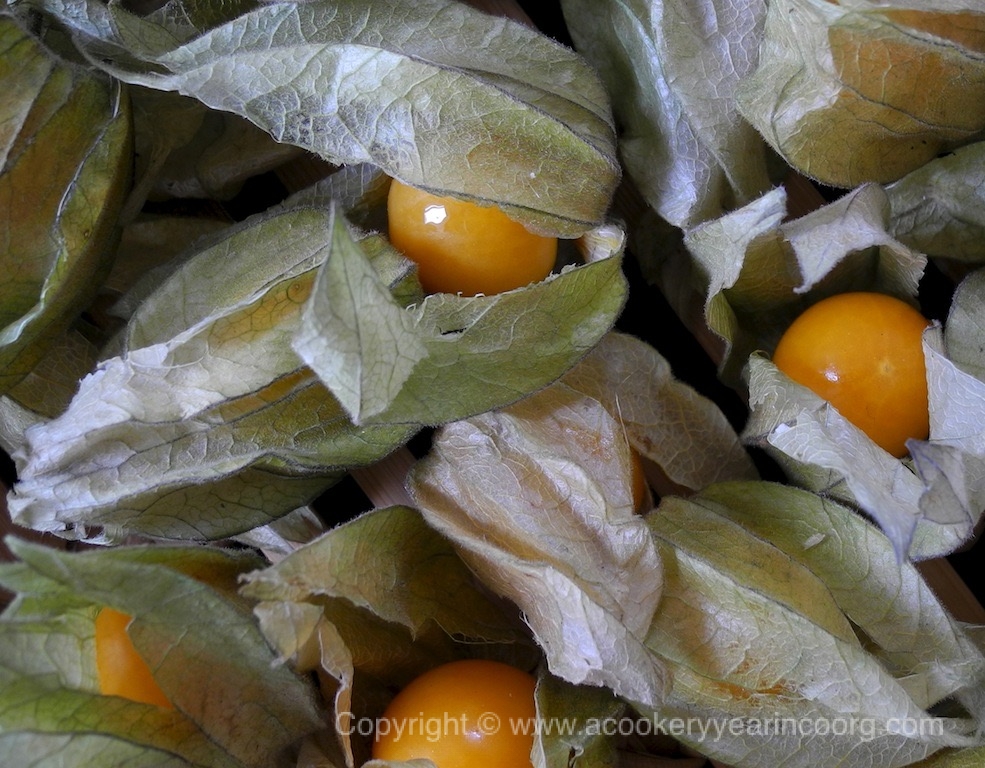
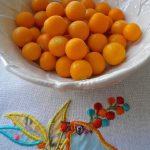
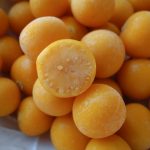
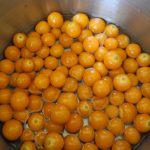
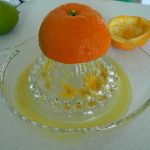
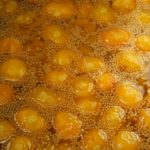
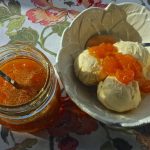
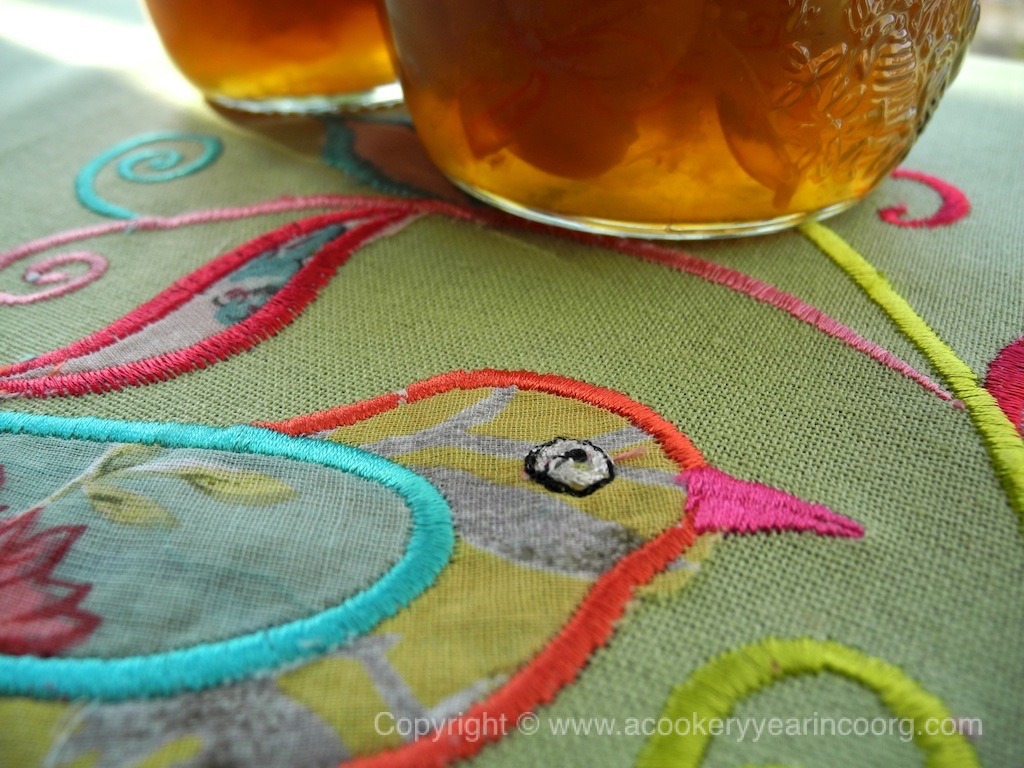
Excellent article…Shalini.
Even I have paid Rs.150/- per kg. for these gommatte pann at Nilgiris, Brigade road.
It’s an irony that we have to shell out so much money to buy those berries which are grown wildly in Coorg.
Hello, Sampath and welcome!
You’re right, it really is ironic that we pay so much for this humble fruit that we take so much for granted in Coorg.I still suffer sticker shock when I see the price tags attached to them in local stores. I would love to see them cultivated more consciously in Coorg, even if it is only for home consumption.
Thank you for reading and taking the time to comment. 🙂
And next time you get hold of some goomatté pann, do try that frozen berry dessert- it’s surprisingly delicious and no effort at all!
Once again, another beautiful evocative piece. Next time I am in India, I have to visit Coorg.
Thank you, Ammini, and yes, you absolutely must visit! Selfishly, I hope it will be when I’m there too, but either way, let the planning begin! 🙂
Hey Shalini, What a neat article, very informative. I had no idea Gummatte Pann was so popular and was sold in markets and neither did I know that it was called “Cape gooseberry”. I am sure it is probably one of those nutritionally rich berries brimming with antioxidents and so much more, but we tend to devalue when somthing is grown in abundance in our backyard.
Butterfruit\Avacado was one such fruit that I had no idea was one of the top 5 super foods, it was my Dad’s staple dessert after lunch and dinner, pretty much everyday. He used to eat it with a little bit of sugar sprinkled on it. Now I buy it for a dollar each and the size is quarter of what we grew in our backyard:) Your article on Butterfruit does full justice to the super food that it is!
I really appreciate the effort and the thought that you put in for each one of your article, the minute details like the embroidered tablecover or the runner that I see in the pictures is just apt with the wild berries and bird in the background. Love your attention to details like those.
Once again the article took me back to plantations in Coorg and the summers that we spent in our estates picking these berries with kids from our labour lines who were our guides around the jungles:) Wow, precious memories.
Great work and look forward to seeing more exotic foods and awesome recipes. All the best.
Vindhya
Vindhya, the goomatté pann have been hiding in plain sight! If you do go looking, I can tell you that “Save-On” is not the best place to buy them. Of all places, Granville Is. Market had a much better deal by far!
And you’re right, they are right up there with goji and acai in the new “super berry league” http://www.besthealthmag.ca/eat-well/healthy-eating/3-super-berries-goji-a%C3%A7ai-and-cape-gooseberry. You might find dried gooseberries at T & T or a Chinese herbalist store too.
They’re grown commercially in a few places in India, and I really can’t help but wonder why we don’t pay more attention to it in Coorg.But that holds true for a lot of things! 😉 Butter fruit in your backyard, that you’d rather give away than sell at the ridiculous price offered locally in Coorg, can sell in the city with a jaw dropping price tag attached…
Thanks so much for reading and for your always generous words. It’s great to hear from someone who shares a common experience in both countries! 🙂
Finally !! some one else who shares my quirky tastes in fruit . I make it a point to go to all the markets when we travel . Guess what I found at La Boqueria ( one of the oldest markets – dates back to 1217) in Barcelona less than three weeks ago??!! Gommatte Pann! Of course I bought some , much to the amusement of my husband and kids, who say I’m a “fruitoholic”. If I find these in the local markets in the U.S, I’ll make the Cape Gooseberry sauce.
Markets, yes! Even when there’s no hope of being able to cook with any of the wonderful produce on display, it’s such a delight to see what’s available locally. It’s a curious thing that most of us seem to associate goomatté with childhood, and many seem to leave it at that. I think it’s time to give it a second innings!:-)
The jam does taste lovely !! And guess who makes it regularly when they are available .. Neelu Jogelekar whom you met last September , I had some at her place , read slathered it liberally on a slice of toast and it was really, really delicious . And on that note, Shonali too made a big batch this month. I have been looking for them here in Bangalore but have not sighted them … 🙁 Loosing hope now as the season is almost over . I really love the sauce you conjured up , it has to taste incredible with the citrus notes . Every picture is a delight , You really are amazing with the camera, they are so clean and bright and the attention to every delightful detail is absolutely heartwarming. You pick just the right spoon , jar , serving plate , bowl , napkin , table cloth , cup saucer for the recipe . Shonali said they are called Rasbhari in the wild east. I wonder if that is a corruption of Raspberry.
Jyoti, there was a time when I would use skinny bits of toast as a holding device for about 1/4 of a jar of gooseberry jam at a go! It was usually the one made by WIT http://wit.org.in/ and there would be an embarrassingly long line up of empty jars (marmalade jars too) in the store, awaiting recycling. Try and get hold of some, though I suspect it may now seem a bit on the sweet side. I’m sure Neelu makes a super version, Shonali too. If all else fails, drop a not so subtle hint that friends need to send care packages now and then 😉
Ras bhari is what they called them in Delhi markets too. I love the way they’re sold, with capes pinned neatly back and strung into fat, orange bouquets. When you do get hold of some, you must try them semi-frozen.It really is like eating a perfect little shot of sorbet!
Thank you for all the lovely words of appreciation. 🙂